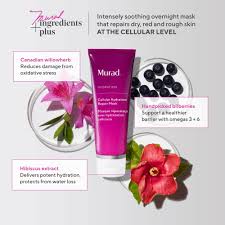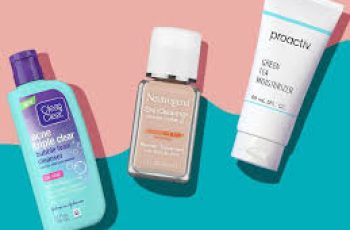
How to Use Overnight Hydrating Masks: The Ultimate Guide for Deep Skin Renewal While You Sleep
Overnight hydrating masks are like a reset button for your skin, designed to deeply nourish, repair, and rejuvenate your complexion while you get your beauty rest.
Unlike traditional rinse-off masks that you remove after 10–15 minutes, overnight masks are left on the skin overnight to work in sync with your body’s natural repair cycle.
They form a protective, breathable seal over your skin to lock in moisture, support skin barrier repair, and deliver active ingredients over an extended period of time.
These masks are especially beneficial for those with dry, dehydrated, or sensitive skin types, as well as anyone dealing with dullness, fatigue, or seasonal skin stress.
But to get the best results, you need to apply them correctly, pair them with the right products, and use them at the proper frequency to avoid overwhelming your skin.
In this guide, we’ll explain how to use overnight hydrating masks, what to avoid, and how to tailor their use based on your unique skin type and seasonal needs.
Whether you’re new to overnight masks or just want to upgrade your current routine, this step-by-step guide will help you wake up to plumper, dewier, and healthier skin.
What Is an Overnight Hydrating Mask?
An overnight hydrating mask, also known as a sleeping mask, is a leave-on skincare treatment that works while you sleep to deeply hydrate and restore the skin barrier.
These masks typically have a thicker consistency than regular moisturizers but are formulated to be non-comedogenic, breathable, and suitable for overnight use.
They contain concentrated hydrating agents like hyaluronic acid, glycerin, ceramides, and botanical extracts that infuse your skin with moisture while you rest.
Many overnight masks also include calming or antioxidant-rich ingredients like centella asiatica, niacinamide, or green tea to reduce inflammation and repair damage.
Unlike occlusive balms or oils, overnight masks are specifically designed to enhance ingredient absorption while minimizing pore-clogging or greasiness.
They’re particularly helpful in dry climates, during seasonal transitions, after exfoliation treatments, or whenever your skin feels depleted and needs an extra boost.
When and How Often Should You Use One?
The ideal frequency for using overnight masks depends on your skin type, the ingredients in the formula, and the current condition of your skin barrier.
For dry, sensitive, or mature skin, using an overnight mask 2–3 times a week can significantly improve hydration, suppleness, and barrier resilience over time.
If you have combination or oily skin, once a week or as needed may be best to prevent congestion while still providing your skin with a restorative boost.
Those with acne-prone skin should look for lightweight, non-comedogenic masks and introduce them gradually to avoid irritation or clogged pores.
During the winter or after traveling, you may benefit from using an overnight mask more frequently, especially if your skin feels tight, flaky, or inflamed.
It’s important to always observe how your skin responds and adjust usage accordingly rather than rigidly following a set schedule.
How to Use an Overnight Mask: Step-by-Step Instructions
Start With a Clean Canvas
Always begin with a gentle cleanse to remove makeup, sunscreen, and any impurities that have accumulated throughout the day.
Use a mild cleanser that doesn’t strip your skin of natural oils so your skin stays balanced and receptive to hydration.
If your skin is particularly dry or sensitive, consider double cleansing with an oil cleanser followed by a cream or gel cleanser for a thorough yet gentle cleanse.
Apply Your Hydrating Toner or Essence
After cleansing, apply a hydrating toner or essence to prep your skin and restore moisture lost during washing.
Look for formulas that include ingredients like panthenol, hyaluronic acid, or fermented extracts to help plump and prime the skin.
This step helps your overnight mask absorb more effectively and evenly across your face.
Use Serums If Needed (Optional)
If you use serums such as niacinamide, peptides, or hydrating boosters, apply them before the mask to maximize their absorption.
Avoid potent actives like retinol or strong exfoliating acids right before applying an overnight mask, as these combinations can cause irritation.
Instead, choose calming, barrier-repairing serums that complement the soothing nature of the mask.
Apply the Overnight Hydrating Mask
Scoop or squeeze a quarter-sized amount of the mask and gently spread it over your face, avoiding the eye area unless the product is eye-safe.
Smooth the mask in upward motions, ensuring even coverage but not applying too thick of a layer—more isn’t always better.
You can also extend the mask to your neck and décolletage, especially if these areas are dry or sensitive.
Let the mask sit for a few minutes to settle and absorb slightly before going to bed, so it doesn’t transfer onto your pillow too easily.
Sleep and Let It Work Overnight
While you sleep, your skin enters its regenerative mode, increasing blood flow and cell turnover while repairing daily damage.
The mask acts as a moisture-sealing shield, allowing your skin to heal, hydrate, and absorb nutrients throughout the night.
Try to sleep on your back to minimize transfer onto bedding and allow for even absorption.
Rinse It Off in the Morning
In the morning, rinse your face with lukewarm water to gently remove any remaining residue from the mask.
Follow with your regular morning skincare routine, including a hydrating toner, lightweight moisturizer, and SPF to protect your renewed skin.
What Not to Do With Overnight Masks
Avoid applying overnight masks directly on top of strong exfoliants, acids, or retinoids unless specifically instructed by your dermatologist.
Layering too many active ingredients can overwhelm your skin and lead to redness, irritation, or breakouts.
Don’t use overnight masks every single night unless the formula is lightweight enough and specifically designed for daily use.
Always patch test new products and introduce them gradually, especially if your skin is reactive or prone to allergic reactions.
Be cautious with masks containing essential oils or heavy fragrances, as these can irritate sensitive skin or trigger breakouts.
Best Ingredients to Look For in Overnight Hydrating Masks
Hyaluronic Acid: A moisture magnet that holds up to 1,000 times its weight in water, helping to plump and smooth the skin overnight.
Glycerin: A humectant that draws water from the air into your skin, supporting long-lasting hydration and barrier health.
Ceramides: Lipid molecules that help rebuild and strengthen your skin barrier, making them ideal for dry or compromised skin.
Niacinamide: Helps improve texture, reduce redness, regulate oil production, and support the skin’s natural protective barrier.
Centella Asiatica: A soothing botanical extract that calms inflammation, speeds up healing, and reduces sensitivity.
Squalane: A lightweight, non-comedogenic emollient that mimics natural skin oils and provides deep nourishment without greasiness.
Panthenol (Vitamin B5): Known for its ability to heal and moisturize, panthenol helps improve skin elasticity and softness.
Who Should Use Overnight Masks?
Overnight masks are suitable for most skin types, especially those experiencing dehydration, dryness, or dullness due to environmental stress or product overuse.
They’re particularly helpful for:
People living in cold, dry, or polluted climates
Those dealing with seasonal skin changes or tightness
Individuals who use actives like retinoids or exfoliants
Anyone seeking to boost radiance and moisture overnight
If you have oily or acne-prone skin, choose gel-based or water-based overnight masks with non-comedogenic labels and fewer occlusive ingredients.
Final Thoughts: Make Overnight Masks Work for You
Using an overnight hydrating mask is one of the simplest yet most effective ways to repair, nourish, and rejuvenate your skin while you sleep.
By choosing the right ingredients, applying it with intention, and adjusting the frequency based on your skin’s needs, you can enjoy softer, more radiant skin by morning.
Add this step into your weekly self-care ritual, and your skin will thank you with long-term hydration, reduced sensitivity, and a healthy glow that lasts.


